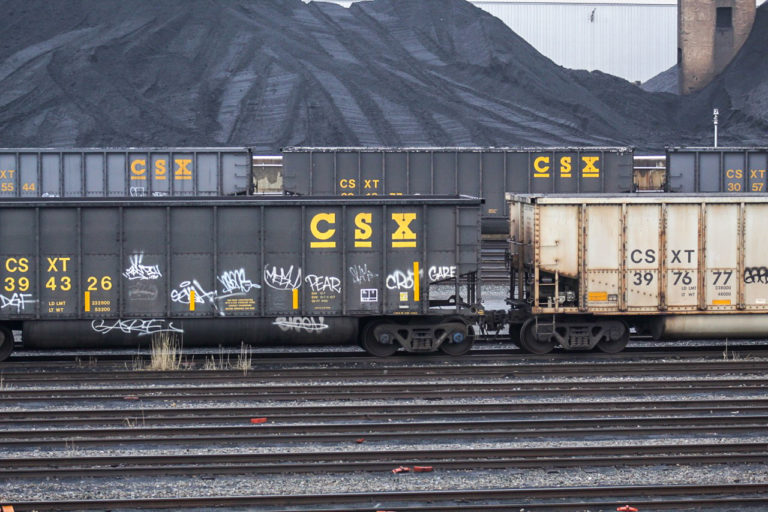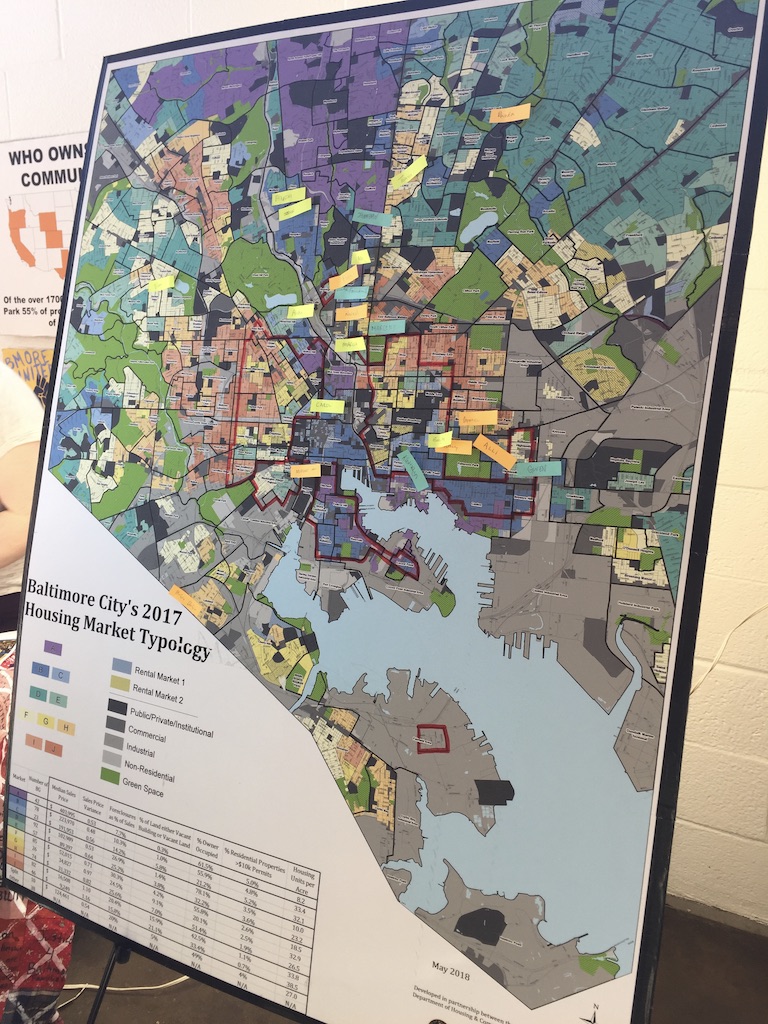About Toxic Tours
A Toxic Tour is an educational walk through a “sacrifice zone” or an overburdened community in order to increase public awareness and pull new members into movement work. This toxic tour in Curtis Bay gives a sense of the industrial “overburden” and the consequences for the environment, human health, and well-being.
News coverage
- On a ‘Toxic Tour’ of Curtis Bay in South Baltimore, Visiting Academics and Activists See a Hidden Part of the City – Inside Climate News
- Maryland finally agrees with Curtis Bay residents: That’s coal dust on their homes – The Baltimore Banner
- Curtis Bay residents sue CSX, charging negligence caused health-harming explosion in 2021 – BaltimoreBrew
Stop 1: CSX Open Air Coal Pier
630 Filbert St, Baltimore, Maryland 21126
The open air coal pier has been around since the 1800s. There is a large open air coal pier which stands 1,000 feed from a Recreational Center and a playground. The coal pier has been in Curtis Bay since the late 1800s. With an annual through-put capacity of 15 million tons of coal, the terminal’s infrastructure and ground storage allow for highly specific blending capabilities to meet customer demands. The Terminal has processed over ten million tons of coal per annum on average since 2010, exported a record 14.284 million tons in 2017, and set a monthly record in March 2015 of 1.854 million tons exported.
Stop 2: Fairfield Industrial Area
701 East Patpsco Avenue, Baltimore Maryland 21126
This was once a community called Fairfield. Once a vibrant residential neighborhood, it was developed in the 1880s with houses built by mostly European immigrants who labored in the area’s rich soil and later worked in the burgeoning industries on the peninsula. In the early twentieth century, African Americans from the South migrated to Fairfield. Fairfield functioned as a racially integrated neighborhood in the “almost southern” city of Baltimore into the 1960s.See an old map of the development here.
With the rise of the Fairfield-Bethlehem shipyards during World War II, the neighborhood experienced its most extensive boom in employment. These jobs would begin to dwindle in the late-1960s as a postindustrial era began and the neighborhood was plagued by disinvestment. In 1971, Fairfield was designated an Urban Renewal Area by the city and the Neighborhood Design Center, a non-profit group of designers offering assistance to disadvantaged areas, began to work with the residents of Fairfield to change the M-3 heavy industry zoning (to residential) but were unsuccessful in their endeavors. Eventually the community of Fairfield was engulfed by industry and bought out by the city of Baltimore.
Stop 3: South Baltimore Community Land Trust Homes
1123 Monroe Circle, Baltimore, Maryland 21225
Community land trusts are non-profit organizations that own land and lease it out to meet shared needs. The diverse uses of CLT land include: quality affordable homeownership, parks, educational centers, cooperative and rental housing, agriculture, affordable commercial space, community gardens and more.
CLTs don’t obtain land for profit. Instead we move land from the narrow constraints of speculative control to open democratic decision making and the limitless creativity of the community.
By removing land from the private market, we are able to protect it and provide lasting stability. The value of the land and essential for community life is not up for debate nor is it to be determined by the forecasts of investors (for more see, https://www.sbclt.org/what-is-a-community-land-trust/)
We stand in the site of the future South Baltimore Community Land Trust housing development where several passive homes are currently in construction and learn about the model for long-term permanently affordable housing.
Stop 4: Filbert Street Garden and The Baltimore Compost Colletive
1317 Filbert Street, Baltimore, Maryland 21225
This is the site of the Baltimore Compost Collective a youth run food scrap composting collective. For more, see https://baltimorecompostcollective.org/
The Baltimore Compost Collective is a youth-driven small-scale composting business that takes food scraps and turns it into “black gold” to be sold at small farmers markets.

